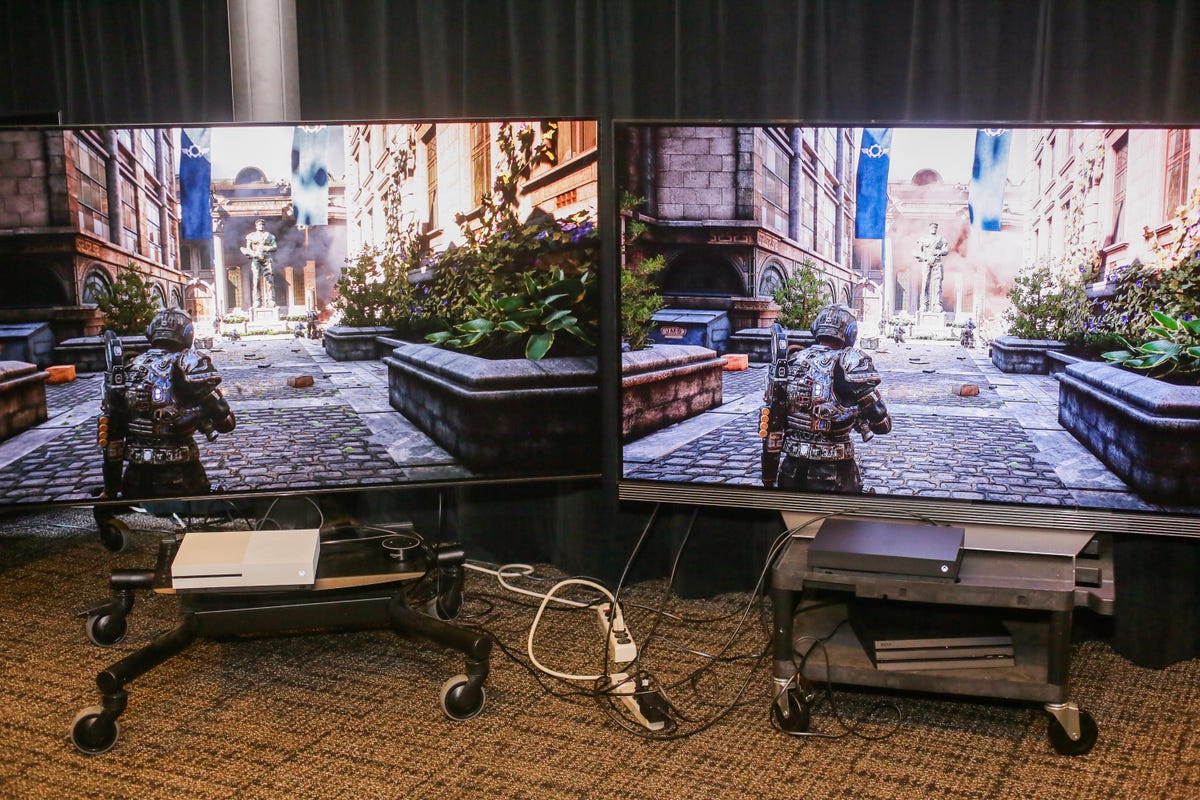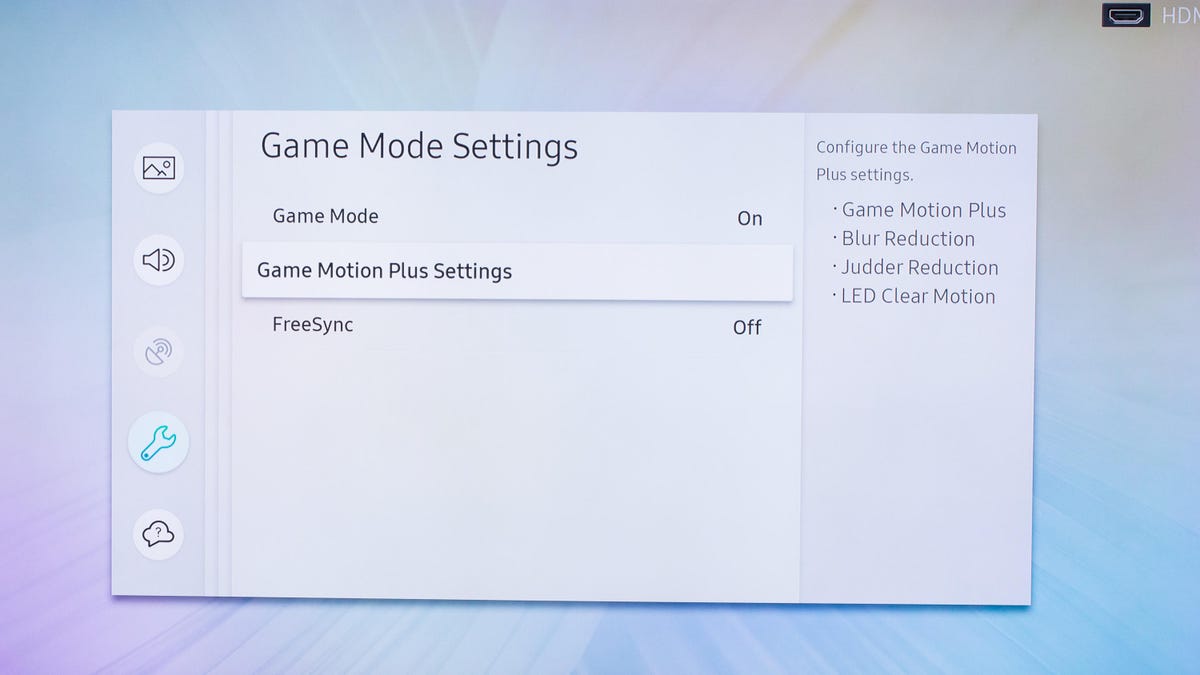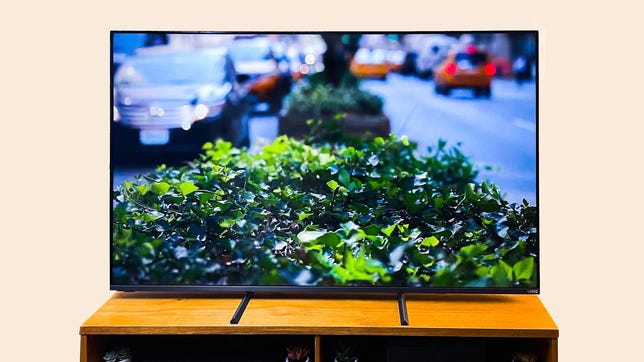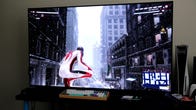If you’re looking for the best gaming TV, you’ll find those options are usually the best TVs for all the rest of it, too. That’s because those sets really excel at the essentials of picture quality, like contrast, color, contrast, brightness and resolution. That means just about any content is going to look sharp, crisp and spectacular, whether it’s a movie, a video game or anything else. That said, there are some other features that really make your TV’s performance, when it comes to gaming, an absolute standout. Things like low input lag and advanced input capabilities such as 120Hz and variable refresh rate can make a huge difference, especially with one of the next-gen consoles, such as the Xbox Series X and PlayStation 5. Another related feature that you’ll find on the best gaming TVs is game mode, which reduces input lag and keeps your image crisp.
How fast you react while gaming depends on a feedback loop between your brain, your fingers, the game controller and the action you see on the TV screen. Delay at any point will diminish your performance and the thrilling immediacy of the playing experience. It takes mere milliseconds for a video signal to travel from your console through the HDMI input on your TV to display on the screen, but too many milliseconds can be noticeable to your brain, or downright deadly to your in-game character. Those milliseconds are known as input lag.

Sarah Tew/CNET
Select TVs’ input lag with game mode on and off (milliseconds)
| TV Model | Year | On (1080p) | Off (1080p) | On (4K HDR) | Off (4K HDR) |
|---|---|---|---|---|---|
| LG OLED65C2 | 2022 | 9.93 | 72.80 | 9.87 | 81.10 |
| LG OLED65C1 | 2021 | 9.93 | 81.13 | 9.97 | 89.43 |
| LG OLED65G1 | 2021 | 9.93 | 81.17 | 9.97 | 89.47 |
| Samsung QN65Q90A | 2021 | 10.27 | 97.37 | 10.20 | 70.33 |
| Vizio M65Q7-J01 | 2021 | 11.03 | 51.47 | 11.03 | 60.37 |
| Hisense 65H8G | 2021 | 15.30 | 126.67 | 15.37 | 126.57 |
| Vizio P65Q9-J01 | 2021 | 16.07 | 112.97 | 13.73 | 112.40 |
| Sony XR-65X90J | 2021 | 17.60 | 159.50 | 17.30 | 144.00 |
| TCL 65R635 | 2021 | 19.97 | 19.00 | 18.27 | 137.40 |
The top 4 gaming TVs
The following TVs, featured at the top of the page, deliver either the lowest lag I’ve measured among the TVs I’ve reviewed, the best picture quality for the money, or a combination of both.
David Katzmaier/CNET
The MQ7 is one of the least expensive TVs available that supports VRR, a feature found on the PS5 and Xbox Series X that smooths out images and reduces tearing. It also has excellent image quality for the money, if not quite as good as the TCL 6-Series.
You’re receiving price alerts for Vizio M65Q7-J01
What else you need to know about input lag
How to turn on game mode. In most cases, viewing in game mode isn’t automatic so you’ll have to turn it on manually, and sometimes the gaming monitor setting can be difficult to find. Many use a picture mode called “Game” while some, like Samsung and Vizio, let you apply game mode to any setting.

Sarah Tew/CNET
Game mode makes a difference, except when it doesn’t. As you can see in the table above, many TVs cut lag substantially when you turn on game mode, but plenty don’t. In general, expensive TVs with elaborate video processing get more of a benefit when you engage game mode.
Most TVs’ game modes are good enough for most gamers. No matter how twitchy you are, it’s going to be tough to tell the difference between 13 and 30 milliseconds of input lag. Many gamers won’t even be able to discern between having game mode on and off — it all depends on the game and your sensitivity to lag.
Turning game mode on can hurt image quality (a little). TV makers’ menus often refer to reduced picture quality. Reduced picture quality is generally the result of turning off that video processing. In my experience, however, the differences in image quality are really subtle with console gaming, and worth the trade-off if you want to minimize lag for a great gaming experience.
4K HDR gaming lag is different from 1080p. The display resolution you play at has an impact, and since new consoles prominently feature 4K HDR output for games, I started testing for 4K HDR lag in 2018. In general, the numbers are similar to the lag with standard 1080p resolution, but as you can see from the chart above, there are exceptions.
Testing is an inexact science. I use a Leo Bodnar lag tester. Here’s how it works, and how I use it. You might see different lag test results from different review outlets, which may use Bodnar or another method.
What’s the best TV for gaming, period?
As I mentioned at the top, the best TV for gaming is one that has the best picture quality for viewing everything else, too. Games benefit from deep black levels, bright highlights and uniform screens just as much as movies and TV shows do.
Yes, there are other factors, but they don’t apply to most gamers. If you play the same game constantly on your smart LED TV and never put anything else on the screen, and that game as a bright static element that stays in the same place on the screen (like a HUD or other status display), you might be at risk for OLED burn-in. But most gamers don’t have to worry about OLED burn-in.
If the TV input where your console is connected is shared with other devices and you don’t want to remember to re-engage game mode all the time, an auto game-mode feature might be useful. And some cutting-edge PS5, Xbox Series X and PC gamers might appreciate 4K/120Hz input and variable refresh rate.
Most gamers, however, will find that the best TV for gaming is the best TV, period.











